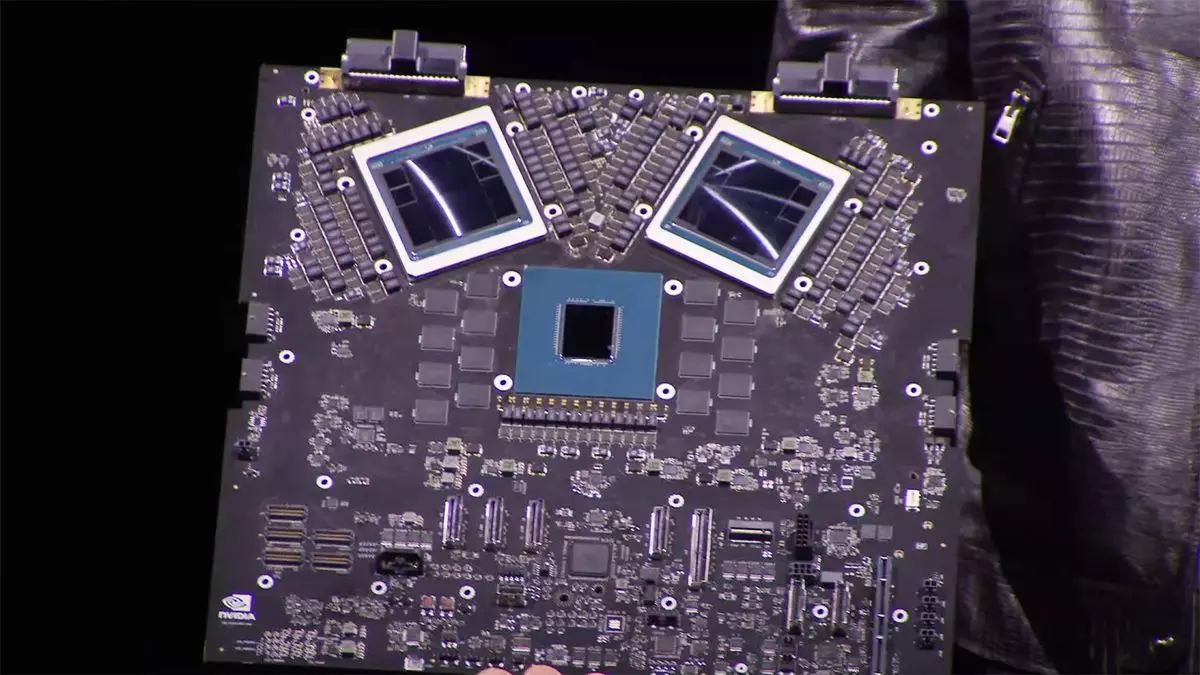In the rapidly evolving landscape of artificial intelligence, the demand for high-performance hardware is more critical than ever. As technology continues to advance, companies like OpenAI must continually upgrade their infrastructure to support their burgeoning AI models. Recently, OpenAI CEO Sam Altman took to social media platform X to express a concern that many in the tech industry are all too familiar with: a significant shortage of graphical processing units (GPUs). While this might seem like a niche issue, it reflects broader challenges faced by tech firms in an era where AI capabilities are expanding at lightning speed.
The GPUs that Altman refers to are not your standard consumer-grade models; rather, they are robust enterprise-grade units, essential for powering the demands of AI platforms. Specifically, Altman mentions the Nvidia DGX systems, which are designed to handle the complex computations required for cutting-edge AI work. The GPU market has been under tremendous strain due to skyrocketing demand, limited production capabilities, and recent disruptions within the supply chain. This has left many tech companies scrambling for resources, underlining the essential nature of these components in the AI revolution.
According to Altman, OpenAI plans to acquire “tens of thousands” of GPUs within a week to support the rollout of its new model, GPT-4.5. However, the company has already felt the ramifications of being out of GPUs, which has delayed its operations and prevented it from releasing its upgraded model to users at the pace it originally intended. With such a high demand for cutting-edge AI solutions, it’s clear that anticipating consumer needs is not just a challenge for OpenAI, but also for entities like Nvidia who produce the necessary hardware.
Altman candidly acknowledges the difficulties in predicting these surges in demand: “It is a giant, expensive model. We really wanted to launch it to Plus and Pro at the same time, but we’ve been growing a lot and are out of GPUs.” This statement encapsulates the unpredictability of technology growth and the corresponding supply chain issues that impact production timelines.
In light of these challenges, OpenAI is reportedly looking to invest in its own AI chip production, indicating a long-term strategy to break away from over-reliance on Nvidia. This move could mark a significant shift in the AI landscape, as it would empower OpenAI to control its technology pipeline more effectively and mitigate external risks linked to vendor dependencies. Despite immediate setbacks, this forecast of developing proprietary chips suggests an interesting interplay between hardware advancements and the evolving needs of sophisticated AI systems.
While consumers await the arrival of GPT-4.5, Altman describes the new model as groundbreaking, stating, “It is the first model that feels like talking to a thoughtful person.” This claim speaks volumes about the potential impact of advancements in AI, as users increasingly seek human-like interactions from algorithms. When an AI offers valuable advice, it’s not just a technological achievement—it’s a breakthrough in understanding human-computer interactions.
For end users, the delay in rolling out GPT-4.5 could be frustrating. However, the good news is that the model is almost here, and Altman conveys a palpable excitement for what it can achieve. Even if GPT-4.5 doesn’t shatter performance benchmarks, its capability to engage users as if conversing with a knowledgeable individual is compelling.
As the industry navigates through this GPU shortage, it remains evident that technology developers will need to continually adapt to the shifting landscape. The shortage that Altman discusses is emblematic of the broader challenges impacting the entire tech ecosystem, demonstrating how intertwined consumer demand, production capabilities, and technological advancements are.
While the road ahead may be rocky, both OpenAI and the tech community will have to innovate rapidly to keep up with the pace of change. As the love for AI drives consumers and developers alike, it signals a future where the intersection of hardware and software can redefine what’s possible. The question remains: will the industry rise to meet this ever-increasing demand? Only time will tell.

